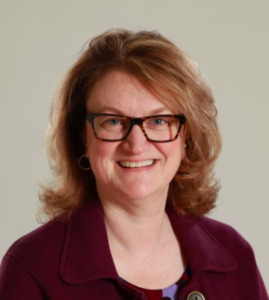Roberta Heale, Associate Editor EBN, @EBNursingBMJ @robertaheale
 A large percentage of my work in family practice care includes screening for early detection of disease. Cholesterol testing, PAPs, prostate and colon cancer screening are a few examples. Another example is the mammogram which is used to screen for breast cancer. Recommendations vary so that the age to start mammograms is 40 in some countries, and 50 in others. It can be difficult to convince some patients to take part in screening tests and encouraging women to have a mammogram seems to be particularly difficult at times. This is a concern since close to 1 in 8 women will be diagnosed with breast cancer and early detection can save their lives. Why, then, do some women avoid breast cancer screening?
A large percentage of my work in family practice care includes screening for early detection of disease. Cholesterol testing, PAPs, prostate and colon cancer screening are a few examples. Another example is the mammogram which is used to screen for breast cancer. Recommendations vary so that the age to start mammograms is 40 in some countries, and 50 in others. It can be difficult to convince some patients to take part in screening tests and encouraging women to have a mammogram seems to be particularly difficult at times. This is a concern since close to 1 in 8 women will be diagnosed with breast cancer and early detection can save their lives. Why, then, do some women avoid breast cancer screening?
According to one site, there are many reasons that women don’t have mammograms. Although not an issue in many countries where medical testing is covered under universal health insurance plans, in some countries, women have to pay to have a mammogram and the cost is a barrier.
Some women are concerned about the radiation from the mammogram, however, the dosage is small, and technology continues to improve to ensure that mammograms are as safe as possible. Time constraints are often a consideration. In this case, I myself, can assure women that mammograms don’t take up a lot of your time.
Fear that the mammogram will hurt is also an issue. Again, with advances in technology, the procedure itself has improved. It can be a bit uncomfortable, but is quick and well worth the time if the result is early detection of cancer. Abnormalities in mammograms aren’t always cancer. Other issues are things such as cysts. If there is a cancer diagnosis, the earlier a tumour is found, the better outcomes.1
Knowing that early detection of breast cancer can save lives, health care providers strive to find ways to help women to understand their risk and encourage them to have mammograms. EBN recently published a commentary 2 of an article describing the outcomes of a systematic review of the effectiveness of patient decision aids in the decision to have a mammogram.3 Although the review included women in their 30’s and 40’s (who are not in the ages to be routinely screened in some countries), the results were discouraging in that patient decision aids did not increase the number of women intending to have mammograms.
Hopefully, more effective tools will come along. Until then, perhaps the best way to increase uptake of mammograms is the straightforward discussion between a woman and her family practice caregiver. I’ll continue to answer questions, provide literature and encourage women to overcome their fears to have breast cancer screening.
1. https://www.augustahealth.com/health-focused/6-surprising-reasons-why-women-dont-get-mammograms
2. Hersch, J. & McCaffery, K. (2017) Using a decision aid may prompt some younger women (38–50 years) to rethink breast cancer screening plans. Evidence Based Nursing
http://ebn.bmj.com/content/21/1/10
3. Ivlev I, Hickman EN, McDonagh MS, et al. Use of patient decision aids increased younger women’s reluctance to begin screening mammography: a systematic review and meta-analysis. J Gen Intern Med 2017;32:802–13